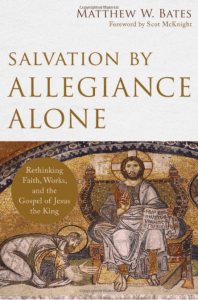About a year ago Jonathan Pennington, a professor at Southern Seminary in Louisville, e-mailed me about my old (and first) book, Interpreting the Synoptic Gospels, which was going out of print at Baker. I assumed that his book was going to be their replacement for my book, but his new book, Reading the Gospels Wisely: A Narrative and Theological Introduction, is a more robust (268 pp!) kind of introduction and not so much a methods book. I was looking forward to reading his book because, now that I am at Northern Seminary, I’m teaching Synoptics Gospels again …
… wondering if I need to update my old, short, accessible book or assign Pennington’s new book. The book is a bit long for the kind of course I’m teaching, but I was absolutely delighted to read his book and to discover how he defines the gospel itself (and therefore the Gospels) and how to read the Gospels as narrative.
What books did you read or would you read to teach students how to read the Gospels? What do you think are major areas that need to be learned?
We agree that the gospel is about declaring, announcing the Story of Jesus as the fulfillment of the Story of Israel. Oddly enough, recently a friend sent me a clip from Trevin Wax’s blog about this book and the clips are precisely the ones I marked in my reading of Pennington’s opening chapter on the gospel:
“… consistently throughout the New Testament Epistles the ‘gospel’ refers to the oral proclamation about Jesus the Christ (meaning the anointed Davidic King) – who he was; what he accomplished through his life, death, and resurrection; the promise of his future return to establish God’s reign; and the concomitant call to repent and have faith. This is not a message of moralism or a call to greater religious obedience but rather is a proclamation of God’s grace and the invitation to hope. This is why it is rightly called ‘good news.’”
“The New Testament authors, building especially on the Isaianic vision, define the ‘gospel’ as Jesus’ effecting the long-awaited return of God himself as King, in the power of the Spirit bringing his people back from exile and into the true promised land of a new creation, forgiving their sins, and fulfilling all the promises of God and the hopes of his people. This Isaianic vision is itself based on God’s work at the exodus, which the prophets take up and reappropriate to describe God’s future work. Because of this vision, described as the proclamation of good news, the apostles call their kerygma ‘gospel,’ and it is why the evangelists likewise describe the work of Jesus and the narratives about him as euangelion.In this there is univocality; Paul and the Gospel writers all understand their message to be one of God’s reign coming in the person of Jesus through the power of the Spirit. The ‘gospel,’ whether in oral or written form, is the message of God’s comprehensively restorative kingdom.”
– Jonathan Pennington, Reading the Gospels Wisely: A Narrative and Theological Introduction, 5, 16-17.
I welcome Pennington’s connecting of the gospel to the Gospels, and think this is a step forward kind of book for those who want a thorough introduction to reading the Gospels (as the gospel). His book includes very helpful chapters on both academic discussions (genre, do we need the Gospels?, why four?, the historical-critical method’s limited value, three avenues: behind, in and in front of the text, intent-meaning-posture) and learning to read the Gospels as a narrative/story. He concludes with a study of how the Gospels are the archway into the canon. Gotta like that!











